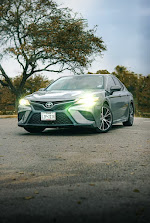The Honda Stun has been in the business sector for about three years and is doing tolerably well, because of an extensive lodge (for a conservative vehicle) and an effective powertrain. What keeps it down for sure, however, is the old-school outline of the lodge and the unacceptable looking outside – things that Honda India has attempted to address with the Stun facelift.
Now that it's authoritatively at a bargain, the Flabbergast facelift confronts the same old resistance from the autos such as the Hyundai Xcent and the as-of-late
upgraded Maruti Suzuki Quick Dzire. Here's a lowdown on how these prominent conservative vehicles stack up
against one another.
MEASUREMENTS
Each of the three autos that you see here is firmly coordinated with regard to the general foot-shaped impression. Being sub-4 meter offerings, the Xcent and the Quick Dzire are just as long at 3995mm, while the Astonish facelift is possibly littler at 3990mm. Concerning the width, the Xcent and the Quick Dzire are 1660mm and 1695mm individually, while the most recent participant from Honda is 1680mm wide. In tallness, the Astonish sits most reduced off the ground at 1505mm while the Quick Dzire is the tallest at 1555mm. The Xcent, in the meantime, is someplace in the center with a tallness of 1520mm. With respect to the wheelbase, on paper the Astound has the littlest wheelbase at 2405mm however on account of some astute bundling Honda has figured out how to make a decent feeling of space and solace even at the back.
EQUIPMENT
Proceeding onward to the gear, prior it was Hyundai that was known for overflowing its autos with hardware. Of late, however, we are seeing different producers offering more components to tempt purchasers. The new Stun, for case, is more component rich than before with standard hardware on top-spec variations including compound wheels, heat retaining front screen, electrically foldable wing mirrors, double airbags, ABS with EBD, atmosphere control, sound framework with Bluetooth availability and parts more.
The Xcent, then again, offers a begin/stop catch, sound framework with 1GB inside capacity, back air conditioning vents, atmosphere control, back camera with stopping sensors and retractable wing mirrors as standard. The Quick Dzire isn't a too long way behind, what with Maruti offering electric wing mirrors, directing mounted sound controls, atmosphere control, stop/begin catch, ABS, and airbags as standard over-the-top-spec variations.
ENGINE
While it radiates through practically all over the place else, the Xcent falls behind its adversaries with regard to the motor and gearbox choices. For one thing, the 1197cc, four-chamber petrol, and the 1120cc, three-barrel diesel units aren't the most intense motors out there. Besides, Hyundai isn't putting forth the diesel-controlled Xcent with the accommodation of a programmed gearbox. There is a 4-speed auto on offer for the petrol-fueled variation, however.
Maruti has done well by offering a wide assortment of motor and gearbox alternatives. The Quick Dzire, truth be told, can be had with either a 1.2-liter four-chamber petrol motor or a 1.3-liter, four-barrel diesel motor. Concerning gearbox alternatives, the petrol-fueled Quick can be matched with either a 5-speed manual or a 4-speed programmed while the diesel-controlled model is accessible with a 5-speed manual or a robotized manual (AMT) gearbox.
With the Astound facelift, Honda has dumped the old 5-speed programmed gearbox for a CVT. The last can be had with the petrol-fueled Astound which is controlled by the same old 1.2-liter four-barrel motor while the diesel-fueled Flabbergast highlighting a punchy 1.5-liter, the four-chamber motor is matched to a 5-speed manual gearbox. Like Hyundai, Honda isn't putting forth its minimized car with a diesel motor programmed gearbox combo yet.
PRICE
Regardless of how great or awful an auto is, everything comes down to evaluating, particularly with regards to picking between autos having a place with what is an economy-minded section. At the base end of the estimate, the Hyundai Xcent and the Honda Astound are comparable to section-level petrol variations coming in at around Rs 5.30 lakh. The Maruti Quick Dzire, then again, is a minuscule piece less expensive with a base cost of Rs 5.19 lakh.
Be that as it may, things are somewhat diverse as we get to the top-spec variations where there is a stark contrast in costs for the top-spec diesel variations. Here the Xcent is the least expensive by an impressive edge, at Rs 7.86 lakh while both the Astound and the Quick Dzire rupture the 8 lakh rupee mark at Rs 8.20 lakh and Rs 8.40 lakh separately. That being said, it's the Quick Dzire that offers the most measure of value for your money since it's the main auto here to have the profoundly attractive diesel-programmed drivetrain combo that is turned out to be entirely famous among the monetary allowance auto purchasers.
Tags:
Car Review


